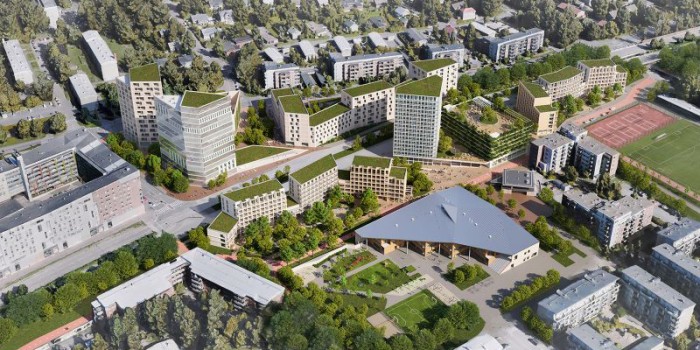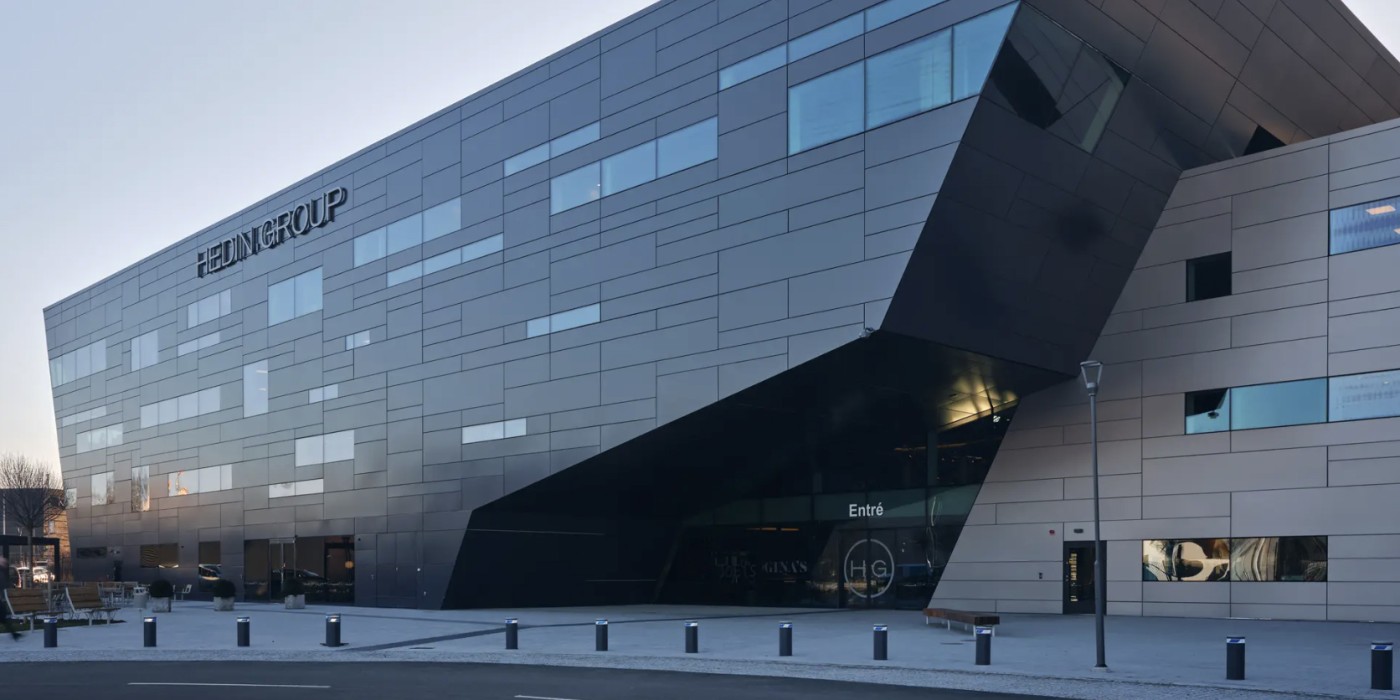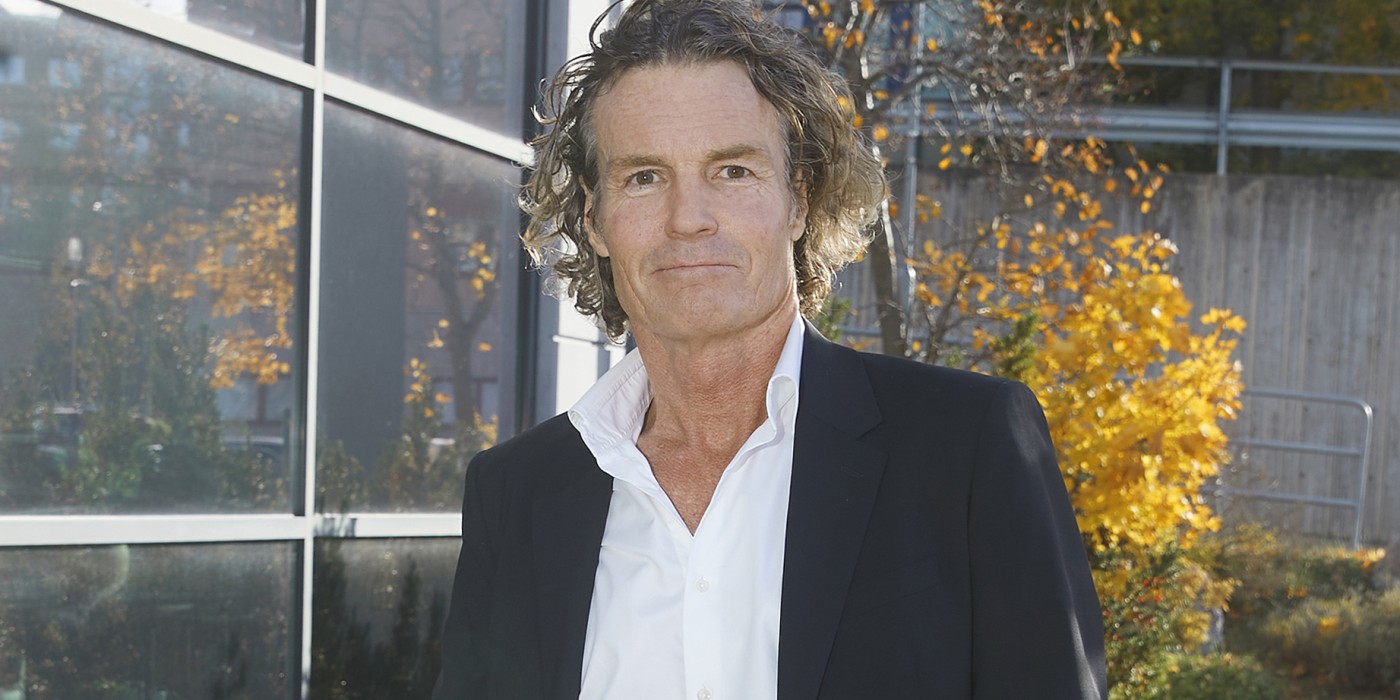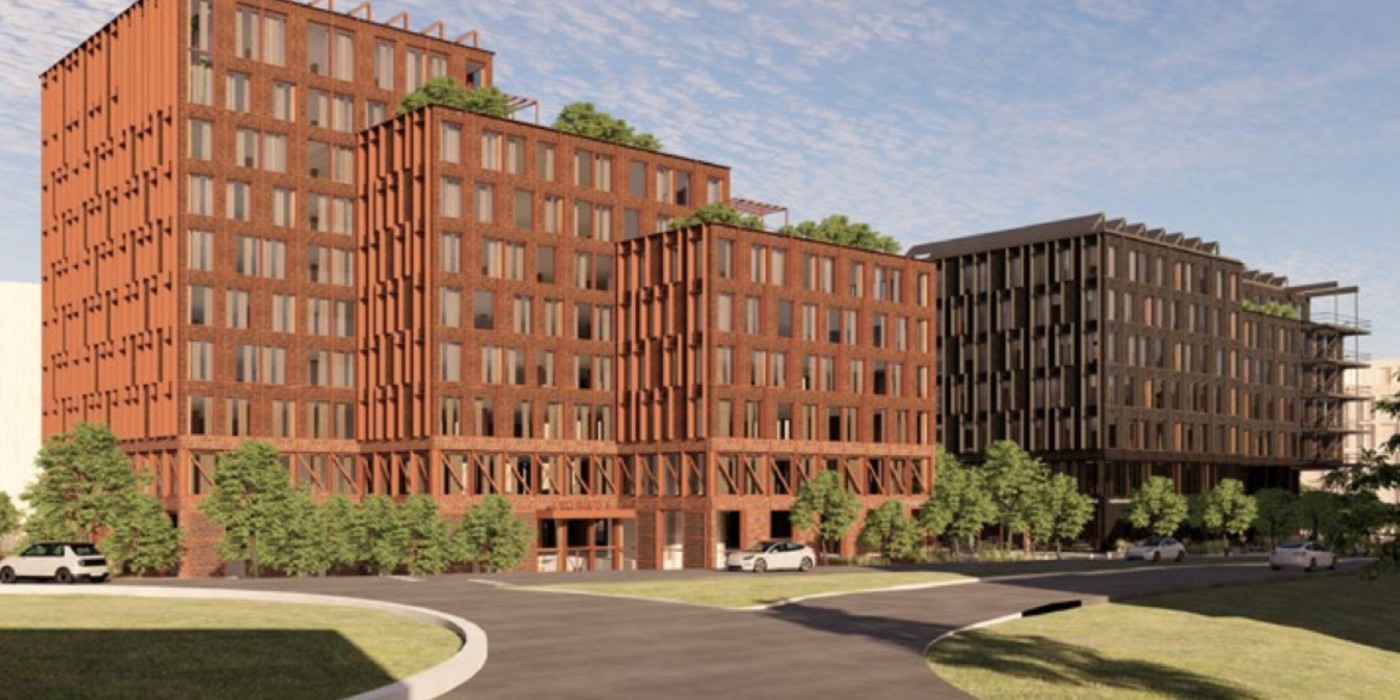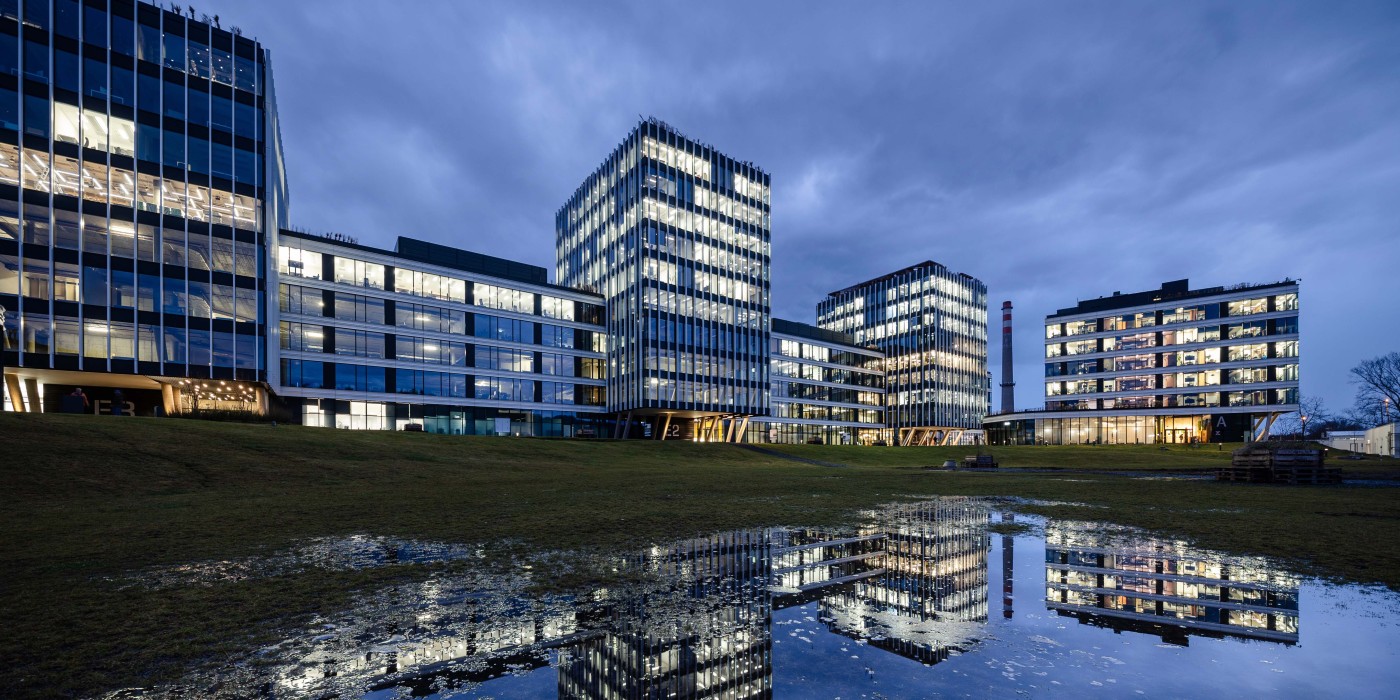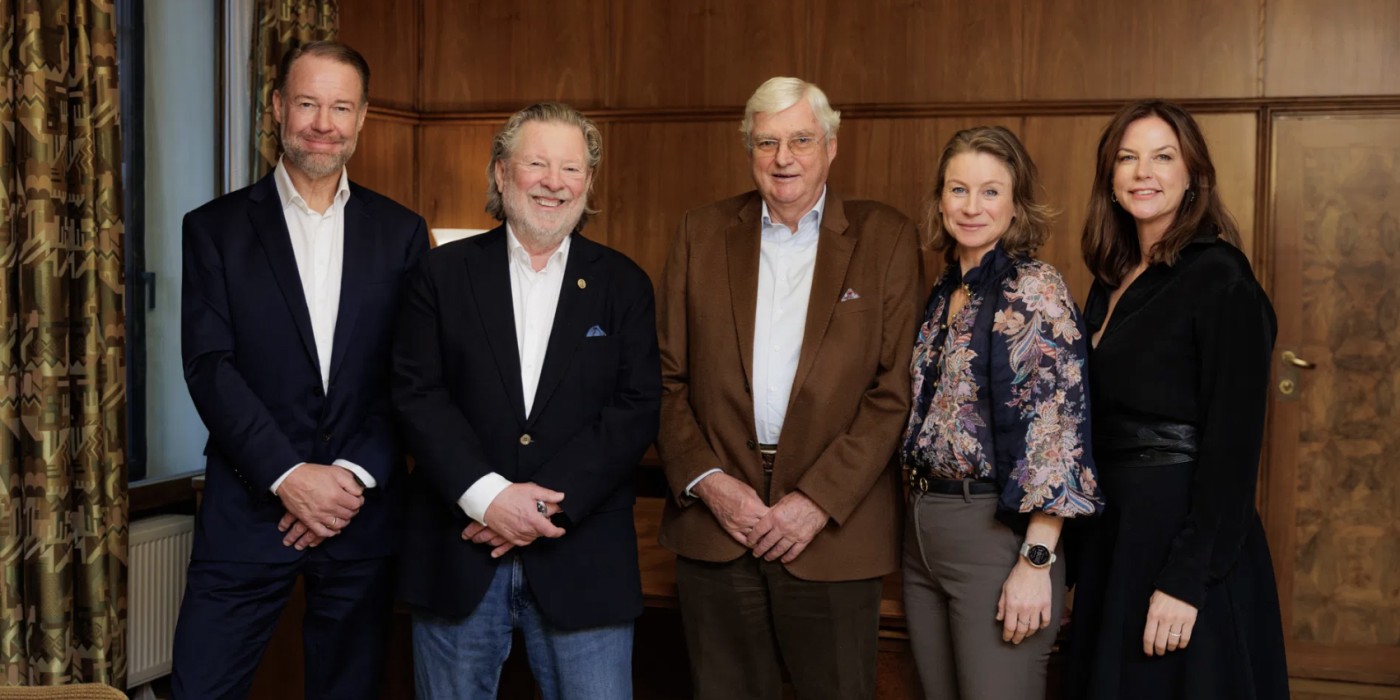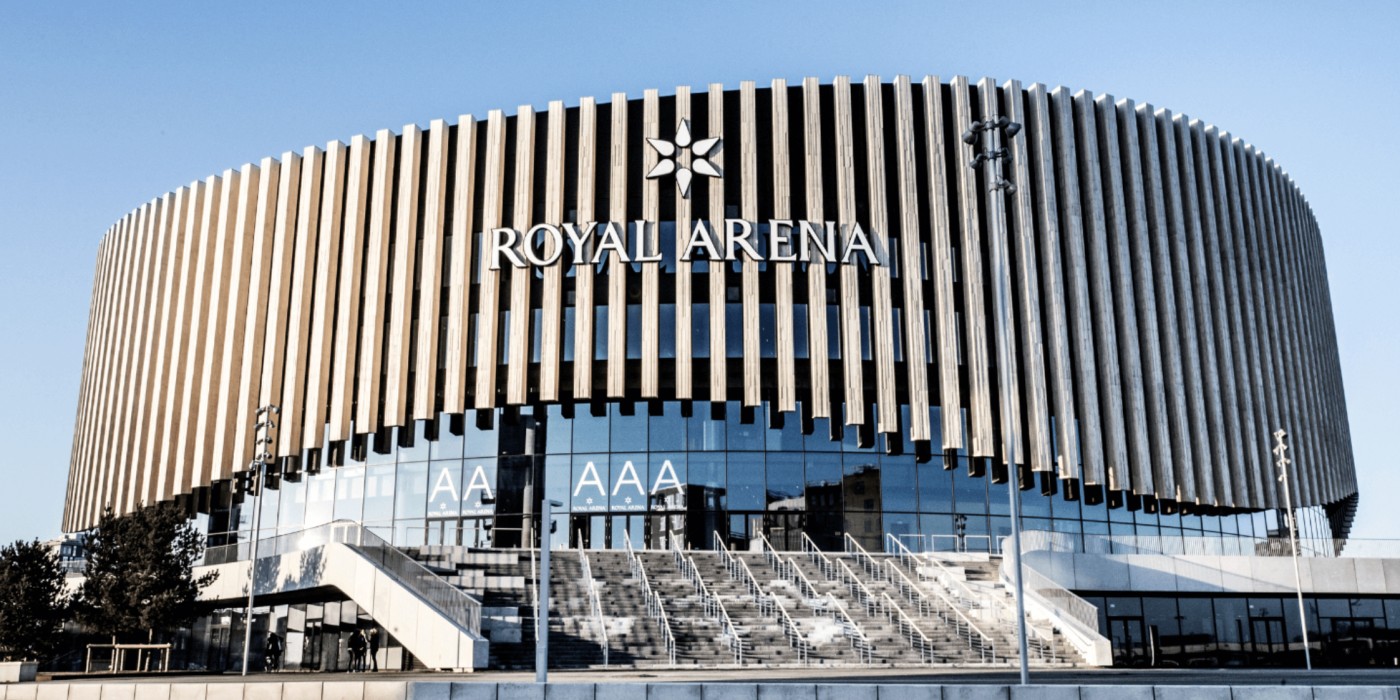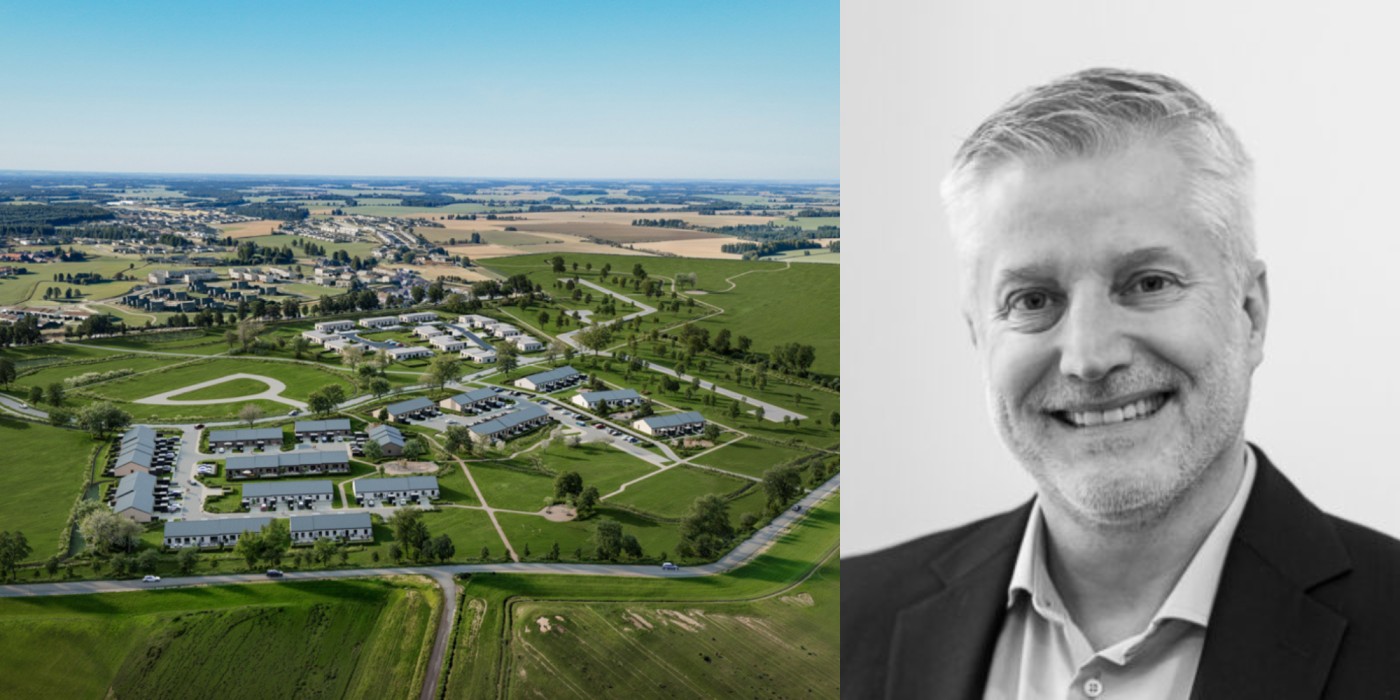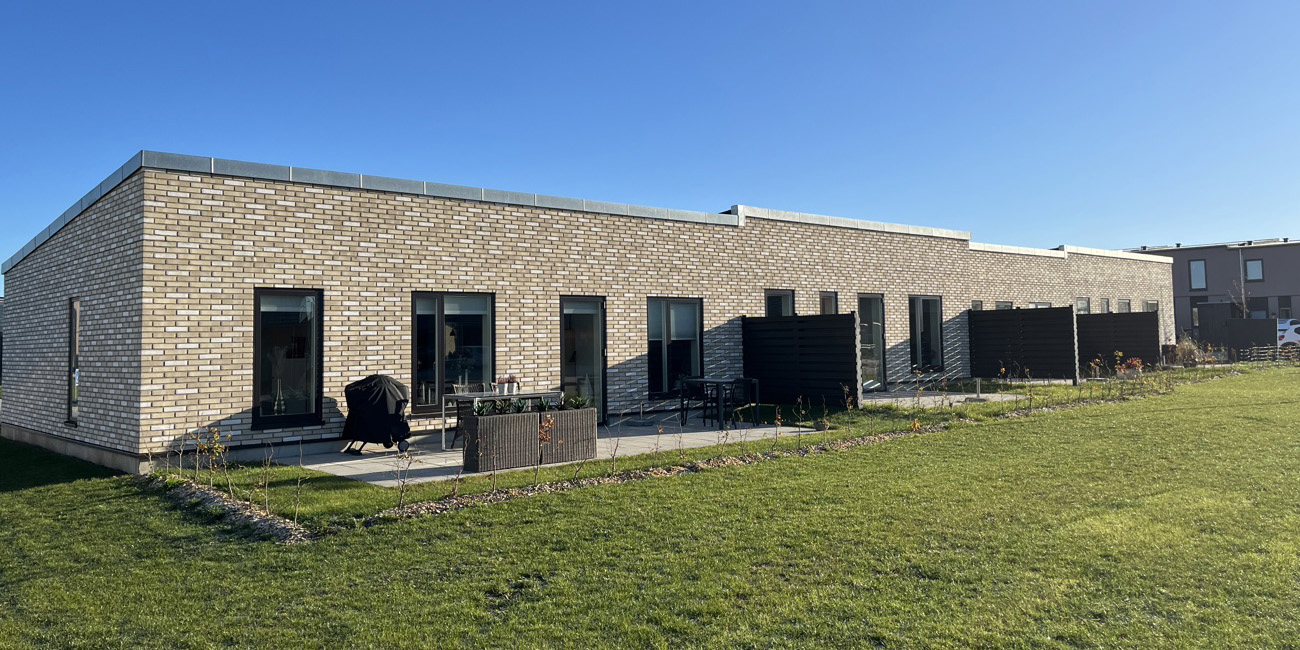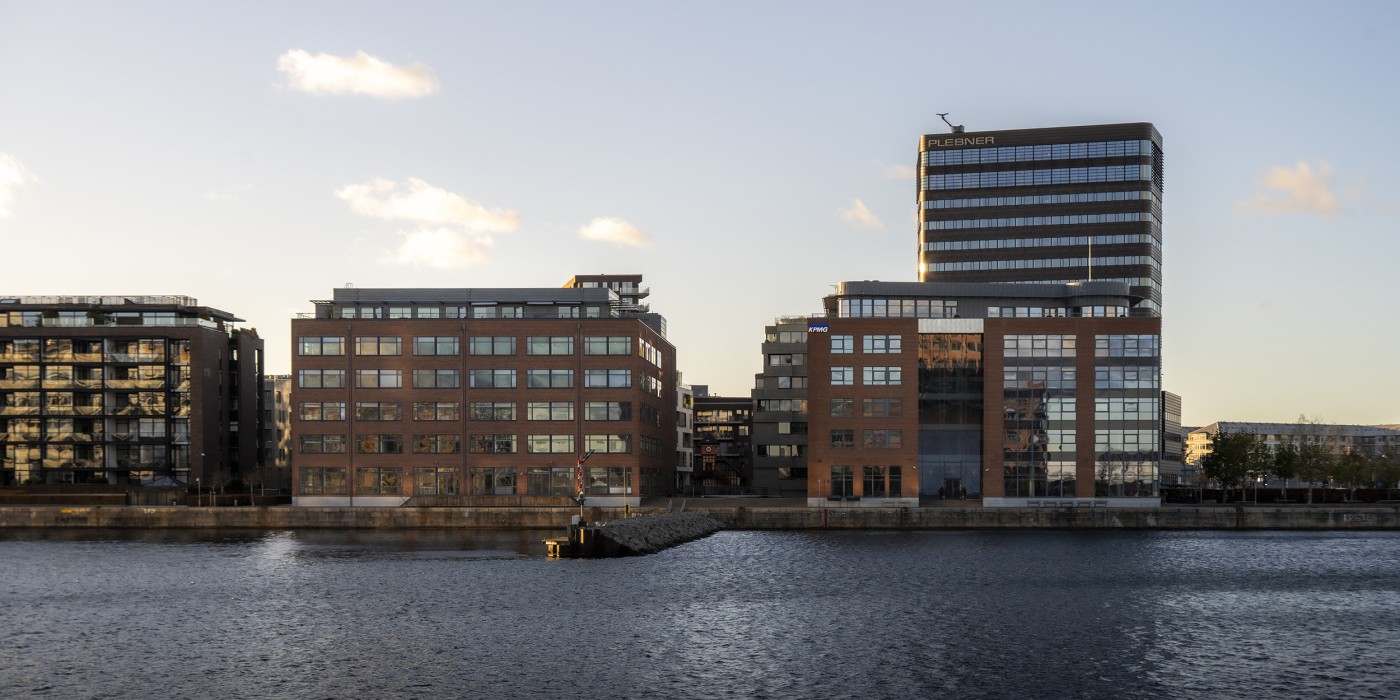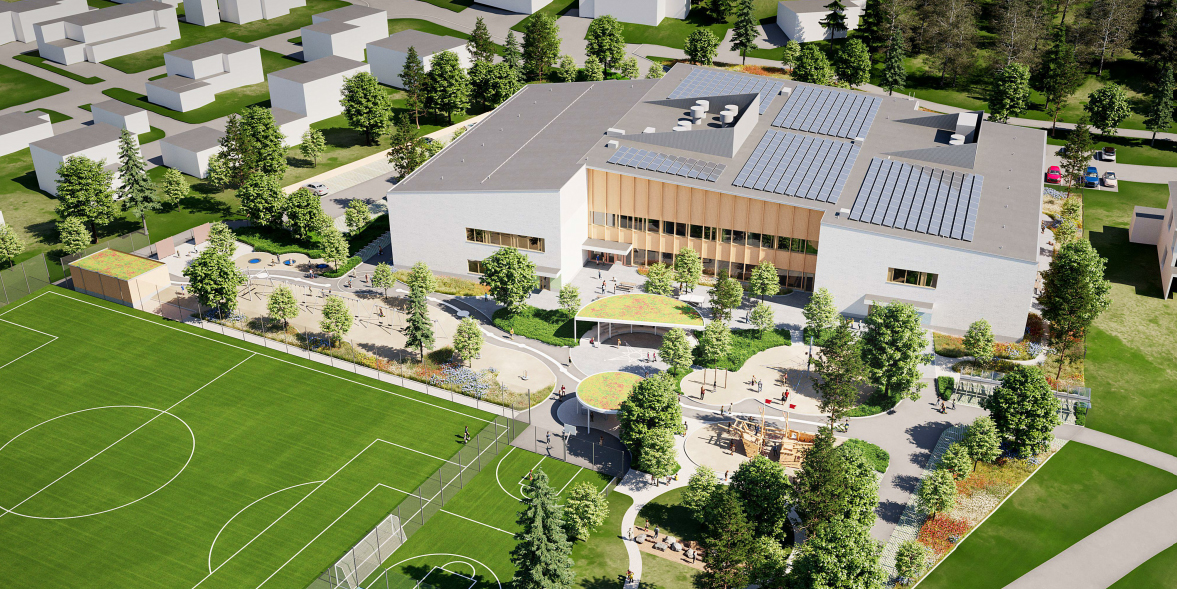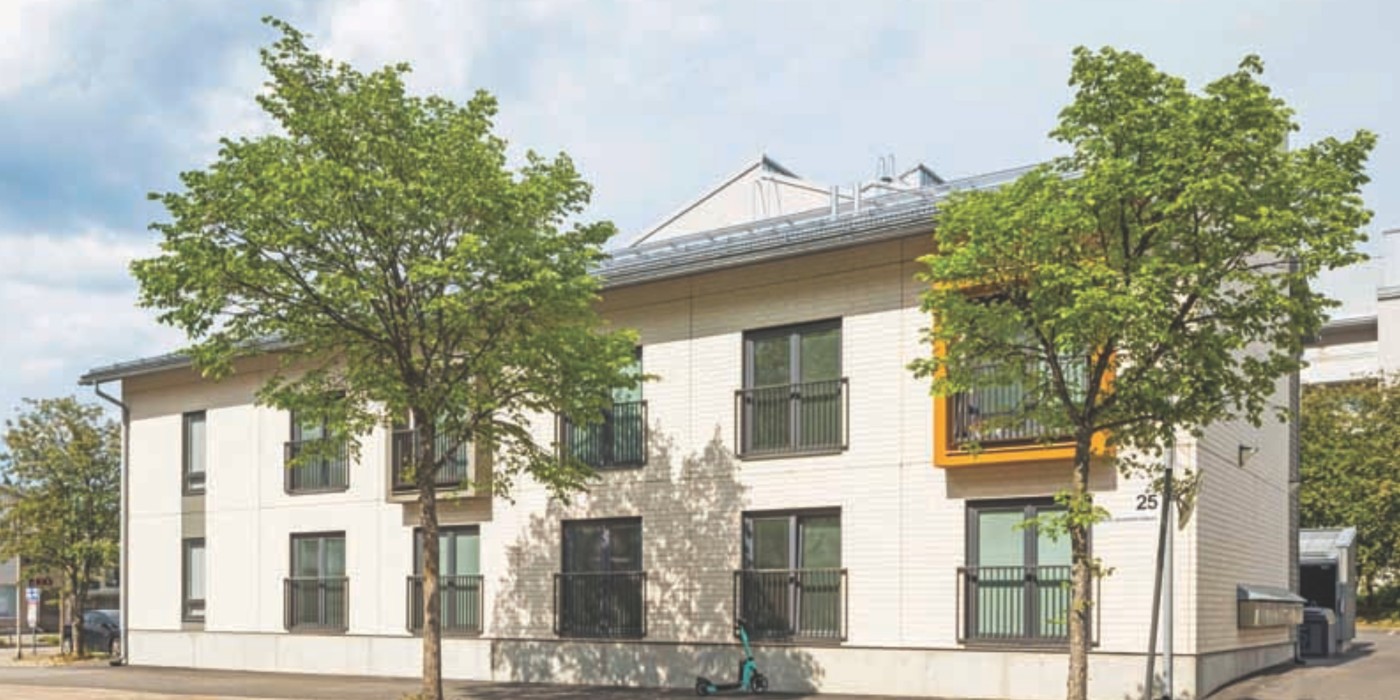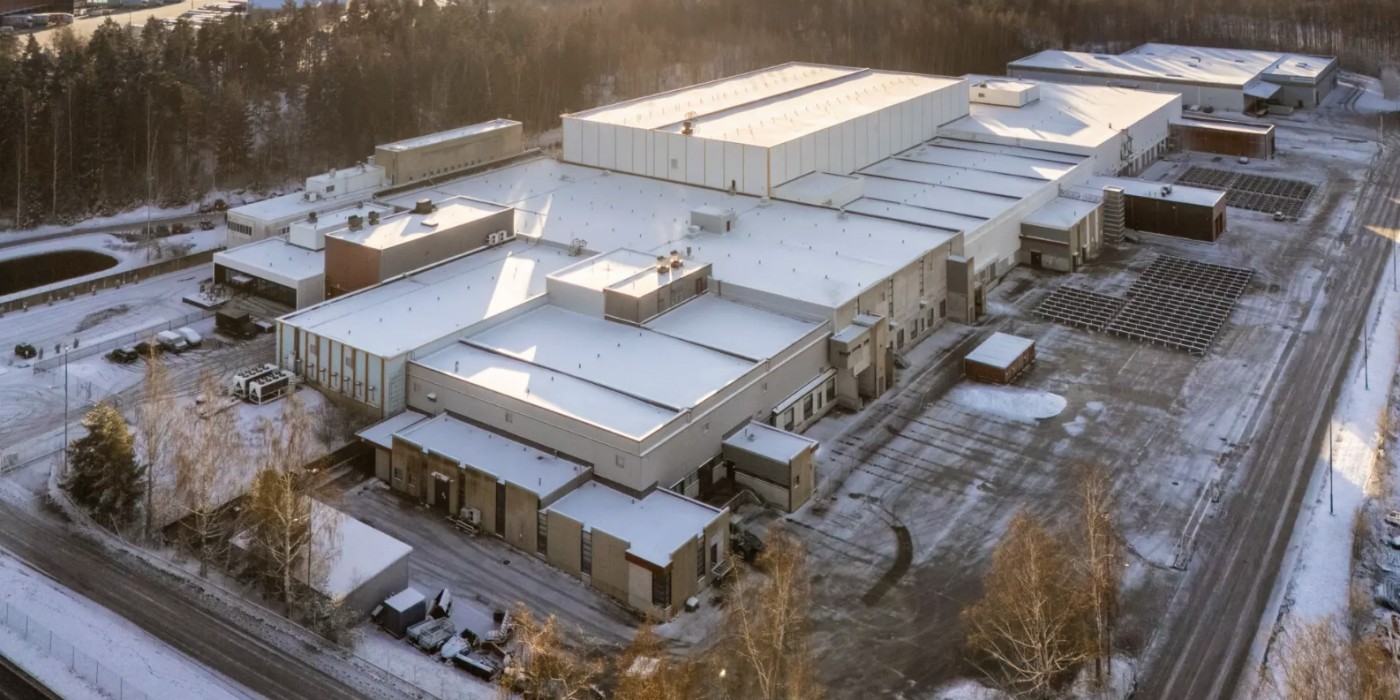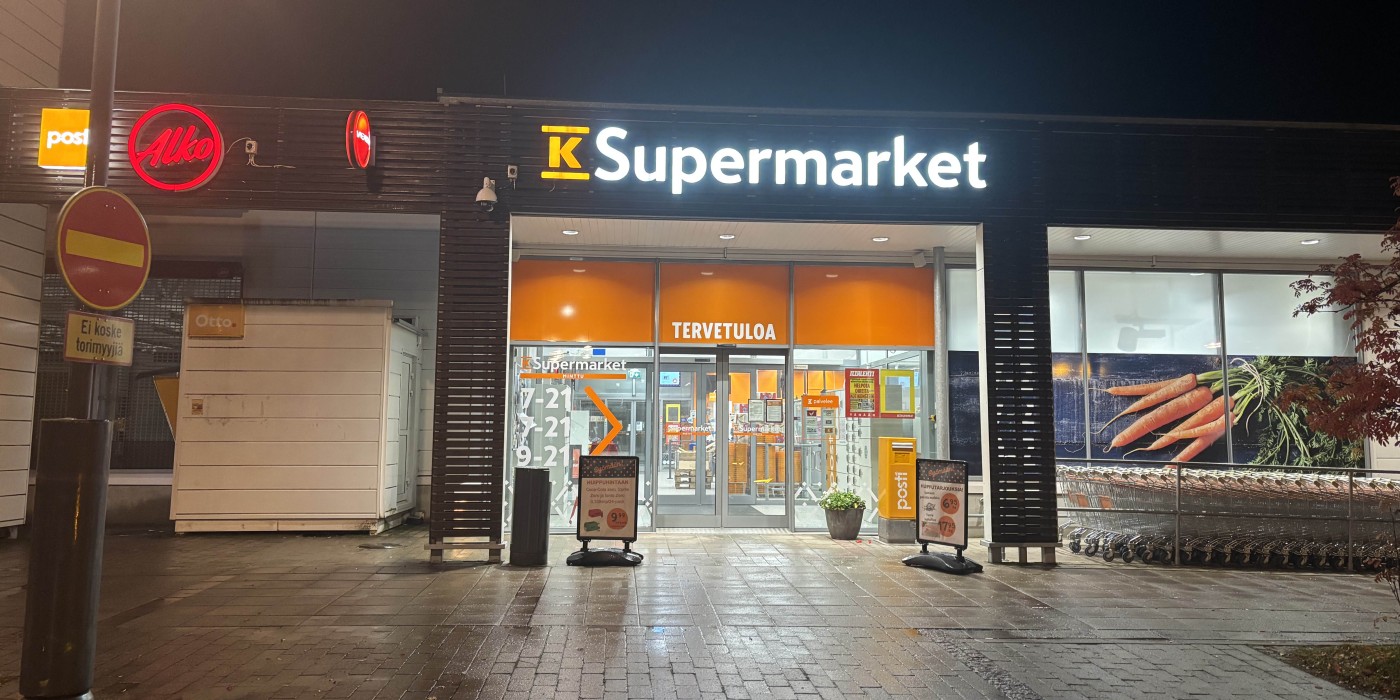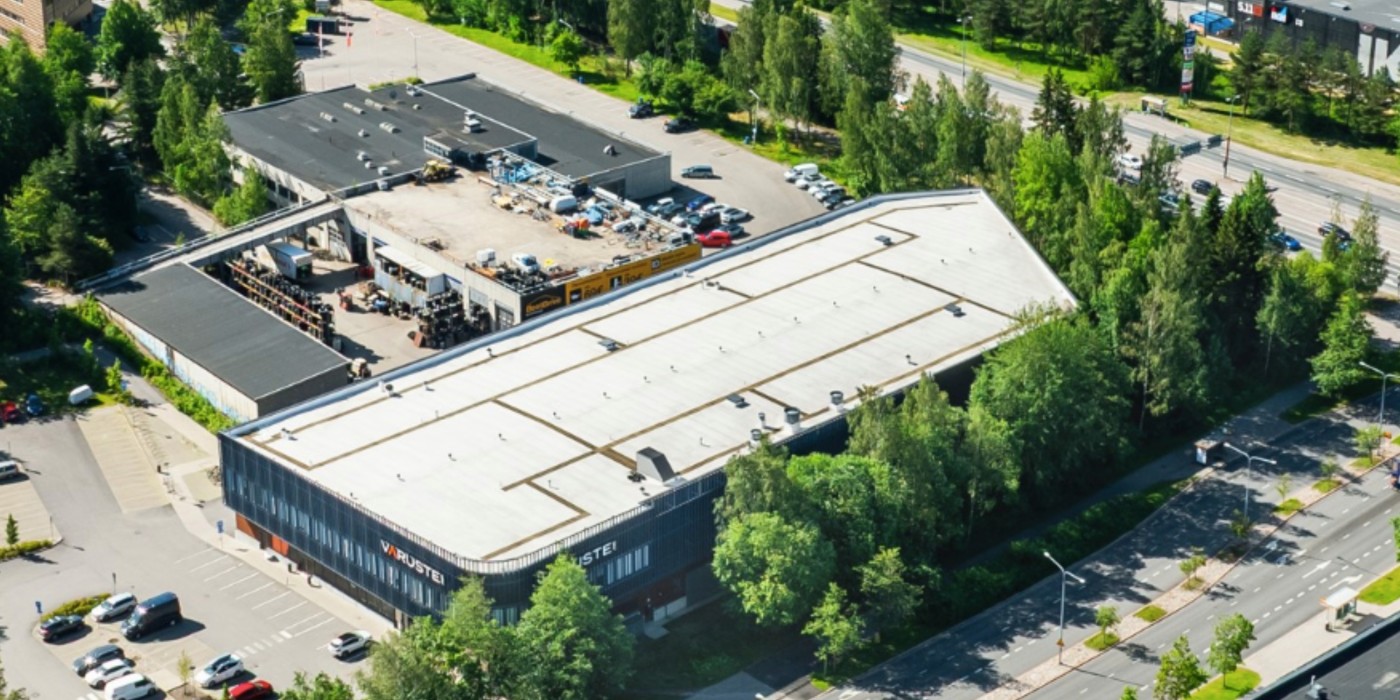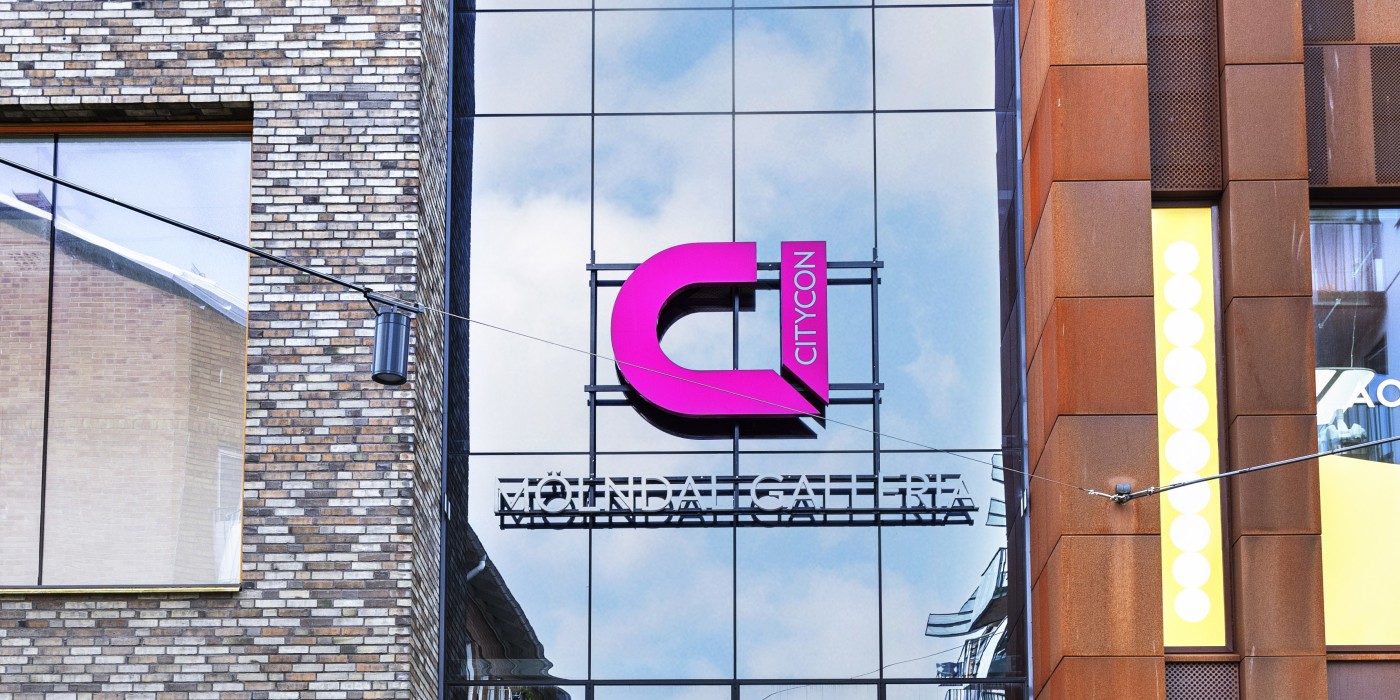In 2019–2020, the City of Helsinki organised a planning competition for the development of Itäkeskus and the Puotila area. Sato took part in the competition as part of a consortium whose proposal won second prize in the competition. Following the competition, the consortium applied for a development reservation for the area and was tasked with developing a new residential city block (called Helminauha – String of Pearls) next to the Puhos shopping centre, a city block between Korsholmantie street and Itäväylä road, and the area around the Puotila metro station. The developer group has refined the plan in cooperation with the City of Helsinki, taking account of the various perspectives, interests and objectives.
“We’ve been developing the plan on the basis of feedback received in the competition and more specific objectives. Last autumn saw the start of a more intensive development phase, and in early summer a more specific plan was submitted for comments by Helsinki residents. The plans attracted a lot of interest among local residents and operators, with opinions received both for and against them. Now our aim is to produce the final plan for the reform of the area,” says Sato Director of Real Estate Development Antti Laine.
There have been a variety of development plans put forward for the Puhos and Puotila areas even before this but implementing them has proved difficult. Now appears to be the right time for change.
“This time, the areas subject to land use planning are part of a larger whole that we call Helsinki East Urban Centre. It’s an area linked with two metro stations, Itäkeskus and Puotila as well as the intersection of major traffic arteries, with the City of Helsinki aiming to transform this area from a suburban centre into an urban centre. The mobility environment will be developed sustainably, with a focus on pedestrian facilities. Homes will be built right next door to services, and the area’s attractiveness will be increased by means of features such as an extension to Cultural Centre Stoa and significant improvements to the quality of the public environment,” says Mikko Näveri, Leading Architect, City of Helsinki Urban Environment Division.
The current development project pays particular attention to the placement of functions in the area as well as to structural solutions. In addition, the implementers – the project constructor and developer partners such as SATO – have been included in the planning process from the very beginning.
“This enables cooperation and feasibility to be taken better into account already during the planning phase, which considerably increases the likelihood of these plans actually being implemented,” says Sato's Antti Laine.
The planning of the areas will continue until the end of 2025, with construction due to begin after that. The first SATO properties are anticipated to be completed in the area in the late 2020s.
The City of Helsinki aims to turn the Itäkeskus area into a more urban centre. The plan produced by the developer group creates a more balanced and diverse urban structure mixing buildings relating to housing as well as commercial functions in the same neighbourhood and in the same city blocks. The original plan from 2020 has been specified further, and the feasibility of the plan has been ensured.
“We’ve explored aspects such as technical issues even further, including the noise impacts of the surrounding traffic and how to take this into account in the precise dimensioning of the buildings and the directions which they face,” Laine explains.
The plan features new homes as well as business premises suitable for a variety of services in the area around the Puotila metro station. The process also involves identifying a feasible concept for a grocery store and a hotel. At the same time, the areas around the metro station entrances will be made more pleasant. The aim is a more urban structure enabling improved local services as well as good walking routes and transport connections.
“The purpose of the plan is to create a new centre for Puotila, provide more homes and services that have access to good transport connections, improve the area’s walking and cycling connections and turn the areas around the metro ticket halls into pleasant and active urban spaces blending naturally with the existing surrounding areas. The residential districts of Puotinharju and Puotila are currently separated by the Itäväylä road, but the new centre will connect them with each other,” says Architect Mikko Summanen from K2S Architects Ltd.
The Puhos shopping centre, Cultural Centre Stoa and their surroundings will be developed. The current owners and the City of Helsinki are in charge of the reform of the Puhos shopping centre. The consortium represented by SATO is planning a new residential city block behind Puhos, located roughly on the site of a previously planned church building that was never completed.
“The new residential city block will bring housing close to services. The Itäkeskus area has had a focus on commercial functions, and the aim is for this new development to introduce a significant volume of new housing also in the centre of Itäkeskus. This will create a more traditional urban structure where commercial construction and housing construction coexist in harmony,” says Laine.
“The residential city block called Helminauha will complete the unfinished northern side of Stoa square and form a distinct backdrop for the urban landscape when arriving from the Tallinnanaukio square. The meandering building consisting of masses of different heights will be a good match with the surrounding buildings. A new lively shopping street will be formed between the Puhos shopping centre and the Helminauha residential block. The city block is part of the broader development of the area into a denser whole with a more urban city-centre feel,” Architect Tuukka Vuori from Playa Architects Ltd points out.
Sato is a long-term property owner in the Itäkeskus and Puotila area. The development of the area serves not only the future residents of the new homes but also current residents living in the area, as the services will improve and the urban environment will evolve.
“As one of the current property owners in the area, Sato has a natural interest in the development of the area, as it will also improve the services and transport connections close to our current residential buildings. We regard Itäkeskus as an excellent location for housing and are keen to be involved in providing it with new housing opportunities,” says Antti Laine, Director of Real Estate Development at Sato.
At the same time, Sato also has smaller development projects underway in the area. The company is currently looking into projects including complementary building in conjunction with Sato-owned properties in Puotinharju and Puotila and planning renovation projects for multiple properties. It is important for Sato to develop both Sato-owned properties as well as their urban environment.
“When it comes to the comfort and integration of residents, I believe that the surrounding urban environment is as important as their own home. We want residents to enjoy their homes and their environment for many decades to come,” says Laine.

 All Nordics
All Nordics
 Sweden
Sweden
 Denmark
Denmark
 Finland
Finland
 Norway
Norway
